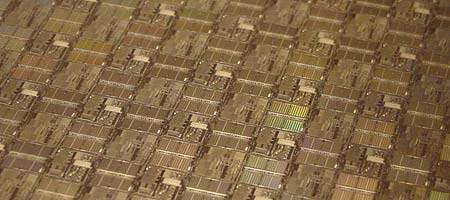In ten years’ time, computers could be a million times more power-efficient than they are today, thanks to a new alternative to today’s complementary metal-oxide semiconductor (CMOS) technology.

While Moore’s Law states that the number of transistors that can fit on an integrated circuit should double every two years, this is getting harder and harder to achieve, as transistors reach atomic dimensions.
One of the biggest problems is the way heat dissipation increases as more transistors are added. But Northwestern University researchers say they’ve found a solution: an entirely new logic circuit family based on magnetic semiconductor devices.
Unlike traditional integrated circuits, which consist of a collection of miniature transistors operating on a single piece of semiconductor, these ‘spin logic circuits’ exploit the quantum physics phenomenon of spin, a fundamental property of the electron.
“What we’ve developed is a device that can be configured in a logic circuit that is capable of performing all the necessary Boolean logic and can be cascaded to develop sophisticated function units,” says professor Bruce Wessels.
“We are using ‘spintronic’ logic devices to successfully perform the same operations as a conventional CMOS circuits, but with fewer devices and more computing power.”
The spin-logic circuits are created with -bipolar spin-transistors, recently patented by McCormick researchers.
The new logic family could result in a computer a million times more power-efficient than those on the market today – although this could take a decade to come to fruition.
“We think this is potentially groundbreaking,” says graduate student Joseph Friedman.






